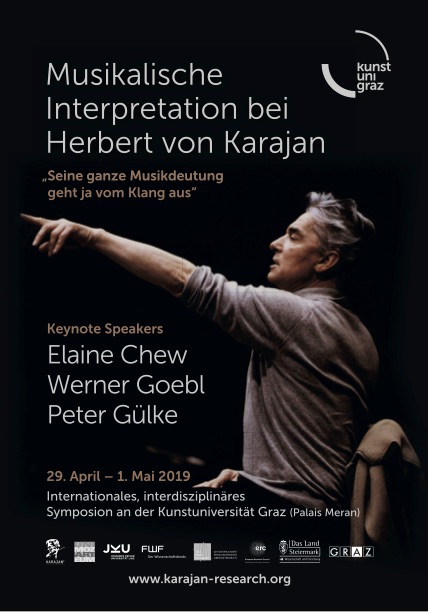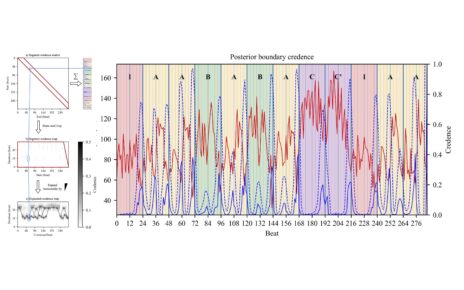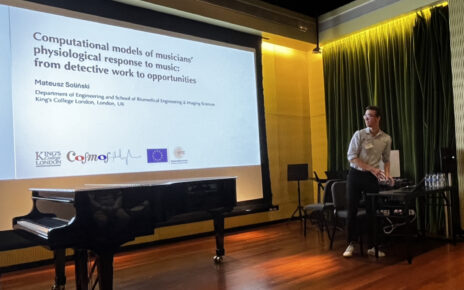A keynote at the conference in Graz, Herbert von Karajan and the Interpretation of Music, introduced the core tenets of the COSMOS project, applied to Karajan’s recordings.
Title
Quantifying Karajan – Rhythm, Timing, and Tension
Speaker
Elaine Chew
Abstract
The advent of computing tools for quantifying and visualizing the parameters of performances has made it possible to scrutinize in fine detail the mystical processes of musical interpretation. Here, we shall examine representations and analyses of aspects of rhythm, timing, and tension as they evolve or are created in performance. From his iconic interpretations of Johann Strauss II’s The Blue Danube and Richard Strauss’ Also Sprach Zarathustra, popularized by the film 2001: A Space Odyssey, to his performances of Richard Wagner’s Tristan und Isolde and Gustav Holst’s The Planets, we shall see how Herbert von Karajan controls these musical parameters to create stirring and indelible experiences, and how computational models can help us capture and gain insights into his remarkable musical skills.
Music technology researcher and pianist Werner Goebl from Vienna and conductor-musicologist Peter Gülke from Weimar, Germany, were the other keynote speakers.
The conference opened on Monday, 29 April 2019 with a preview of a new documentary Karajan – Portrât eines Maestros by Sigrid Faltin, and a presentation of a festschrift for the organizer Professor Peter Rever’s 65th bithday.
The keynote, Quantifying Karajan, took place early Tuesday morning at the Palais Meran. The session was chaired by Gerhard Widmer (ERC ADG Con Espressione). There were two pianos on stage, which provided the choice of a Bösendorfer or Steinway for the presentation.
A highlight of the final day was the panel discussion with members of the Berlin Philharmonic and Vienna Philharmonic Orchestras who had worked with Karajan.
EC photos. More at [ photos ]











